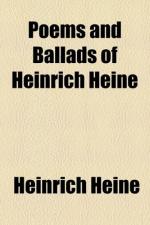|
This section contains 6,771 words (approx. 23 pages at 300 words per page) |

|
SOURCE: "The Idea of the 'Sol Iustitiae" in Heine's Deutschland. Ein Wintermärchen," in Deutsche Vierteljahrs Schrift für Literaturwissenschaft und Geistesgeschichte, December, 1978, pp. 604-18.
In the following essay, Rose examines Heine's use of pagan and Christian imagery in Deutschland: Ein Wintermärchen—a poetic satire of volatile German politics in the 1840s.
It has been assumed, that, in Deutschland. Ein Wintermärchen of 1844, Heine eschewed the symbols of Mid-summer as well as the carnivalistic laughter of Atta Troll. Ein Sommernachtstraum of 1843. Yet astral myth motifs abound in his "Winter's Tale," as in the earlier "Midsummer Night's Dream," and it might also be claimed that they are treated with no less irony in the latter.1 Heine begins his satirical "Wintermärchen" by parodying the promise of a better world beyond that of Germany, and the material world as such—the Utopian "Entsagungslied" of the "Harfenmädchen." But this...
|
This section contains 6,771 words (approx. 23 pages at 300 words per page) |

|


